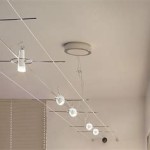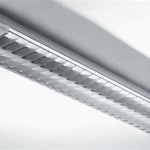Essential Aspects of Restaurants Ceiling Lights
Restaurants ceiling lights hold great importance in shaping the ambience and functionality of a dining space. They play a crucial role in creating a welcoming and inviting atmosphere for customers while ensuring adequate illumination for efficient operations. Understanding the essential aspects of restaurants ceiling lights is paramount for designing and selecting the most appropriate fixtures for any establishment.
Let's delve into the key aspects to consider when choosing ceiling lights for restaurants:
1. Lighting Type
The choice of lighting type depends on the desired ambience and functionality. For instance, incandescent and halogen lights provide a warm and inviting glow, while LED and fluorescent lights offer high energy efficiency and long lifespan. Chandeliers and pendant lights add a touch of elegance, while recessed and track lighting ensure even illumination.
2. Brightness and Color Temperature
Brightness levels should be adjusted based on the size, shape, and layout of the restaurant. Task lighting, such as over tables and counters, requires higher brightness than ambient lighting. Color temperature, measured in Kelvin (K), affects the mood and atmosphere. Warm white (2700-3000K) creates a cozy and inviting ambiance, while cool white (4000-5000K) promotes alertness and concentration.
3. Mounting Height and Placement
The mounting height and placement of ceiling lights influence the distribution and intensity of light. Lights suspended lower create a more intimate atmosphere, while higher mounting provides more uniform illumination. Proper spacing and alignment of lights prevent shadows and glare, ensuring optimal visibility for both customers and staff.
4. Style and Aesthetics
Ceiling lights can complement or contrast with the overall decor of the restaurant. Rustic and industrial-style fixtures add a charming touch, while modern and contemporary designs create a sleek and sophisticated ambiance. The size, shape, and color of the fixtures should be carefully considered to harmonize with the architecture and furniture.
5. Maintenance and Cleaning
Regular cleaning and maintenance are essential to keep ceiling lights in optimal condition. Choose fixtures that are easy to access and clean, reducing the risk of dust and debris accumulation. Consider the frequency of cleaning, lifespan, and replacement costs when selecting ceiling lights.
Conclusion
By understanding the essential aspects of restaurants ceiling lights, restaurateurs can make informed decisions when designing and selecting the most suitable fixtures for their establishments. Careful consideration of lighting type, brightness, placement, style, and maintenance ensures an inviting ambience, efficient functionality, and a memorable dining experience for customers.

Five Simple Restaurant Lighting Design Tips That You Should Follow Mullan

6 Restaurant Pendant Lighting Installations That Look Good Enough To Eat

3 Restaurants With Modern Pendant Lighting Cers

50 N Restaurant Lighting Design Ideas To Explore Today Jaquar

Restaurant Lighting Modern Light Fixtures Pendants Lamps

Designer Commercial Pendant S Cafe Lighting Replica Lights

3 Restaurants With Modern Pendant Lighting Cers
Decorative Lighting For Restaurants 5 Aqua Creations Cameron Peters

Lights For Restaurants Bars Lighting Styles

Restaurant Led Lighting For Restaurants








